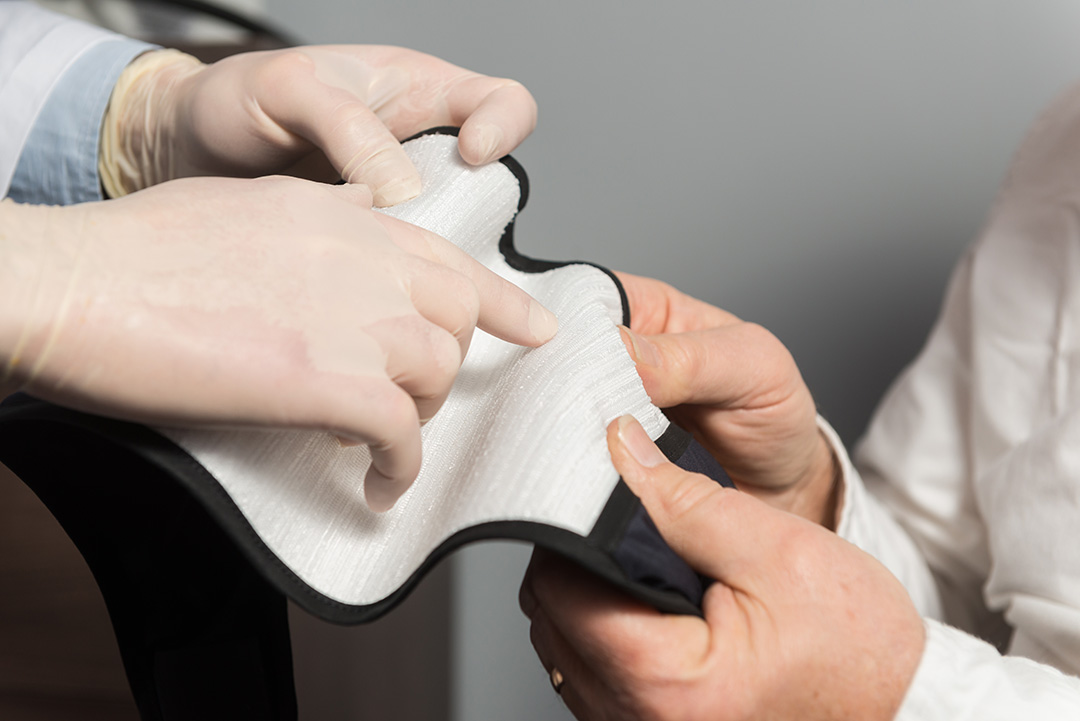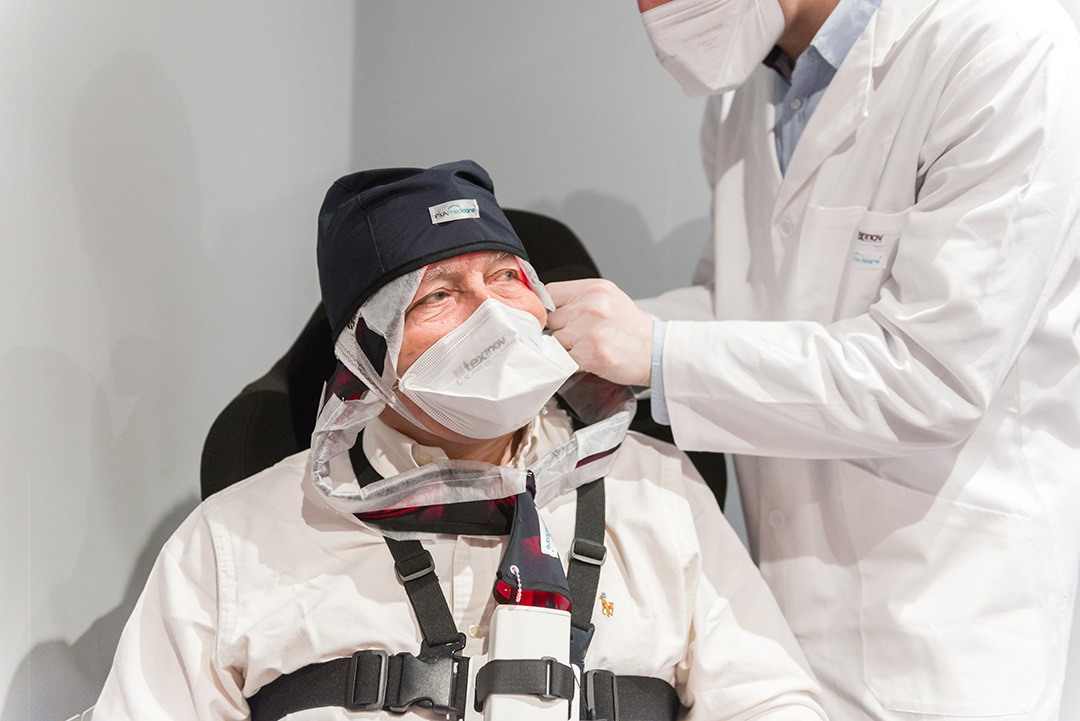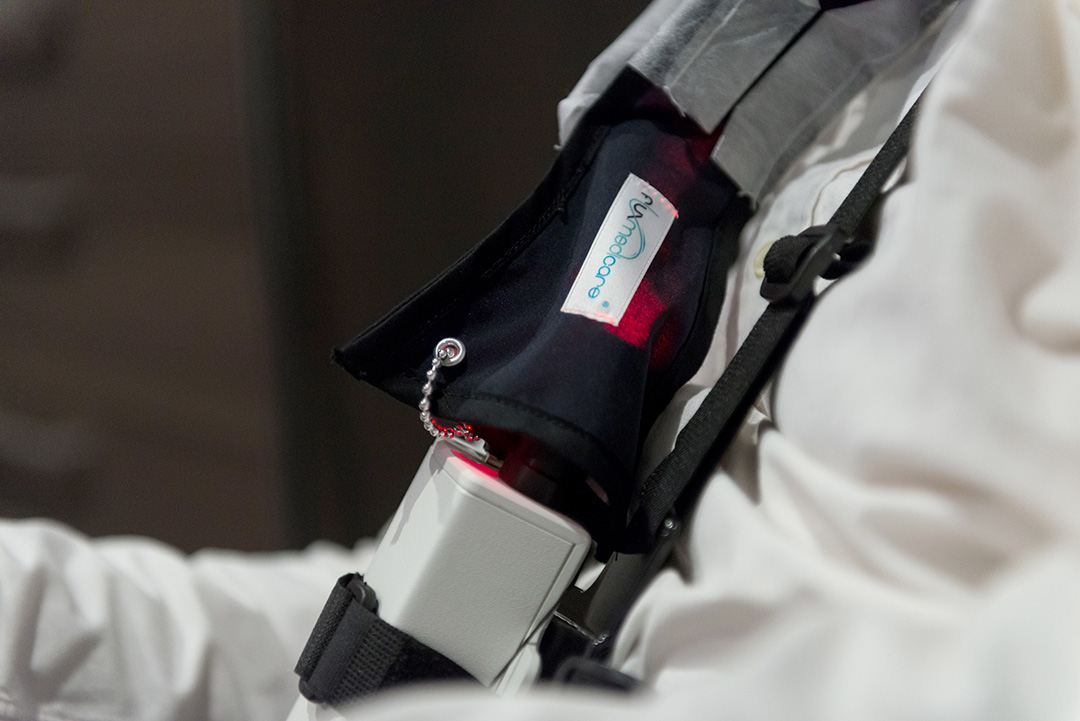Technology
FLUXMEDICARE® V2 uses light diffusion technology with unique properties known as Textile-PDT. This T-PDT Photodynamic Therapy medical device is composed of a luminous textile connected to a laser source.
How is our technology exclusive?
The light comes from optical fibres directly inserted into the textile structure. This technology is a patented knitting process developed by MDB Texinov®.

It has numerous advantages:
No heat emitted by the textile (1)
Unique light homogeneity
Textile flexibility and conformability
Several textile formats available depending on the area to be treated
Demonstrated treatment efficacy (2)

Even with a reduced light dose the treatment remains effective: official publication of the clinical study (2) available from the “British Journal of Dermatology”.
The average illumination delivered by the luminous textile is uniform over the entire treated area. The textile is totally conformable and adapts to the patient’s morphology. Therefore all damaged areas are treated equally.
Technical characteristics
- Wavelength: 638 nm (red light by laser diode)
- Light dose (fluence): 12 J/cm²
- Average irradiance value: 1,3 mW/cm²
- Maximum effective irradiance surface area : 360 cm²

(1) See publications : Mordon, S., et al, Light emitting fabric technologies for photodynamic therapy. Photodiagnosis Photodyn Ther, 2015. 12(1): p. 1-8.
E. Thecua, C.V., A-S. Vignion, F. Lecomte, P. Deleporte, et al. Light emitting fabric for photodynamic treatment of actinic keratosis. in SPIE BIOS. 2017, San Francisco
(2) The patient’s pain is thus evaluated between 0 and 1 out of 10 (10 being the maximum pain threshold imaginable) with a complete response rate for non-inferior lesions on the precancerous area treated. Resulting from the European project PHOS-ISTOS (FP7-CIP-ICTPSP-2013.3.5) drawn up in partnership with INSERM in Lille (U 1189 – Laboratoire OncoThAI), CHU de Lille and Klinikum Vest in Recklinghausen. The official publication of the clinical study is available from the “British Journal of Dermatology”: https://doi.org/10.1111/bjd.18048
Mordon, S., et al., The conventional protocol versus a protocol including illumination with a fabric-based biophotonic device (the Phosistos protocol) in photodynamic therapy for actinic keratosis: a randomized, controlled, non-inferiority clinical study. Br J Dermatol, 2019.
